Vision of the solution
Solving two of the global issues listed by the United Nations - no poverty and global hunger. More than 820 million people worldwide suffer from hunger, and an additional 130 million people are at the brink of starvation since the beginning of COVID-19. More so, by 2050 this number will increase by 2 billion people. This means not just one idea or one player but mutliple idea and multiple players need to participate in tackling these challenge.
Some of the possible approaches the countries can work on
- Meet the immediate food needs of their vulnerable populations,
- Boost social protection programmes,
- Keep global food trade going,
- Keep the domestic supply chain gears moving, and
- Support small holder farmers’ ability to increase food production
But what countries/government can do is limited for different reasons. So we want to build and share digital infrastructure with private companies and social enterprises who could play collective role in this. For private companies, commercially there is a bigger opportunity if they are seriously considering it.
As always keeping the end customers in mind, we want to create something that could be affordable and approachable for those in poor and also remote areas around the world. We want to use affordable modern technology and make it easy and convenient to use at the same time for every stake holders.

What could the private sector can contribute?
Private sector bigger or smaller company could be using digital platforms to track people’s needs around the world while trying to balance out the food production. Also, platforms could be used to find a balance between food demand and food supply / excessive number of food and hunger.
Some solution using TradlPlatform infrastracture
- Platform that would be connecting farmers and retailers
- Platform connecting farmers and direct consumers
- Platform connecting farmers and wholesale buyers
- Platform connecting wholesale sellers and retail buyers
All this scenario that allow
- Trade of good
- Services from different players in the food ecosystem
- Transportation services.
- Connectivity, Discovery, Communication between different players
- This connectivity could boosten the discovery of things
- Using this data, government agencies will be able to get the demand and supply insights to balance it needs.
Approaching the solution through Online Platform Model
- Will help to reduce the amount of middlemen in a supply chain while selling directly to the businesses.
- The platform could cover multi-regions and the bureaucracy could be happening online.
- It could help farmers to see the historic demand and how their customers were performing overall,
- It could also help tracking market conditions(online means data driven) to keep the farmer up-to-date about the market and its trends.
- The feature of personalized communication one-to-one with a customer through the platform could become an outstanding point.
How does it work?
Before the customer or the farmer starts using the Marketplace, he/she should create an account. They need to follow these steps to do so:
- Download the application
- Create an account
- Choose whether you are the farmer (or a seed supplier) or the customer (restaurant, shop, retail / wholesale buyer etc)
- Enter first and last name
- Email mode or Phone number mode.

All users will also be asked to verify their email/phonenumber with a OTP sent to their email/Phone. Once they set it up, all users should gain access to the app and be on a way to fighting hunger.
Creating your profile
After registering to the app, the first thing they should do is to create the account(buyer or seller or any others). The account icon is on the navigation bar at the bottom of the screen.
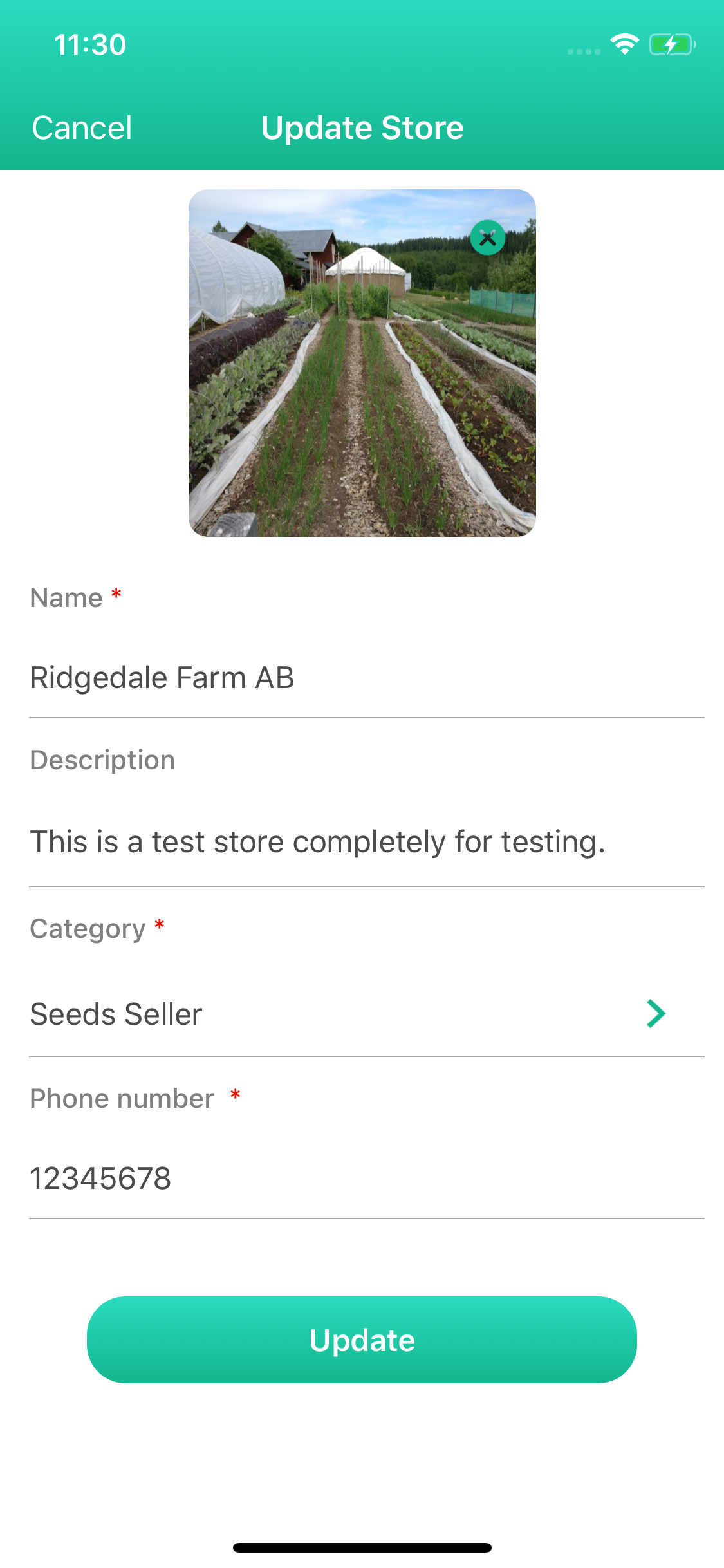
As a farmer, he or she will be prompted to fill out the following information:
- Name
- Description
- Address
- Category
- Other optional details as per your account attributes configuration
By filling this information out, it will be easier for the farmer to find the right customer as the system recommends it. Once you enter all the information needed, you will be able to create your first listings / view the other farmers available and customers (restaurant, shop, retail / wholesale buyer etc).
Creating your listing
To add a product available, you can either click the central “Sell” button on the navigation or go to the “More” button -> “My Store” -> click on the plus sign. That will open up a page where you can create your listing.
You can add: (The below list may vary based on the type of listing )
- The product photo
- Title
- Description
- Category
- Price
- Offer Percent
- Tag
- Other features depending on the category / sub-category
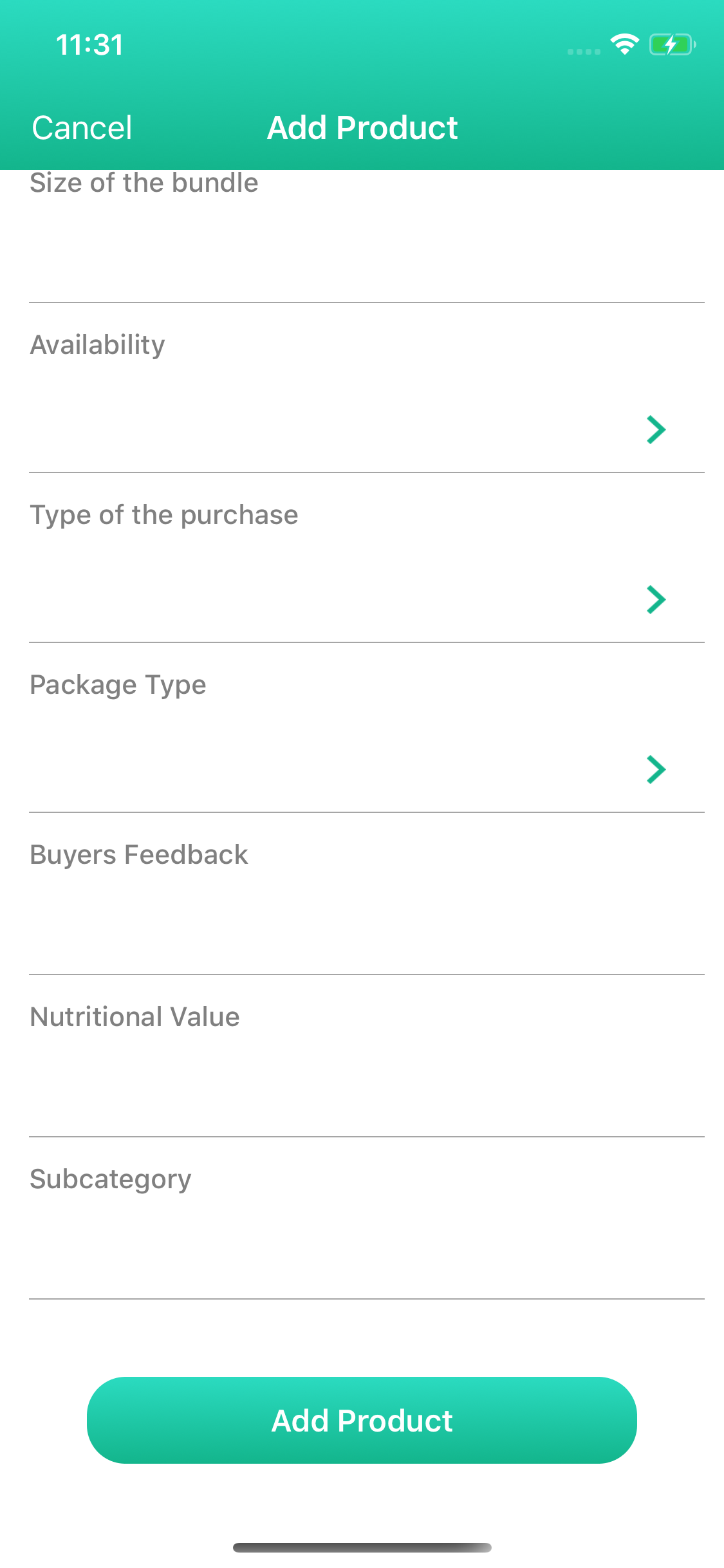
Once you have your listing posted, you can either promote it or proceed to another one.
Farmer’s account
This platform mainly serves farmers and their needs to find customers easily without any issues as we try to optimize the supply / demand relationship. To do so, any farmer can create an account, and afterwards use it to create listings, getting updates about items being sold and being visible for the seed sellers who would support farmers with their endeavors. Farmers could follow the other farms they might be interested in, get support from the government agency, get supply from the seed sellers, or simply follow the requesters they want to work with and supply them.

Farmers also have an option to choose whether they want to work as a wholesaler or as a retailer. A similar process
- Create an account following the steps above
- Then, create listings based on what they grow and what they want to sell (for that, the farmer needs to have a good quality picture and information like nutritional value etc about the product)
- To make a listing the farmer could follow the guidelines mentioned above.
Once the farmer has a listing posted, he or she can either promote it or post another one. It is important to mention that they have to wait for the listing to get approved by the platform owner after the moderation process.
To edit the account information, farmers can press the “edit” button on the top right side of the page. It is possible to change the profile picture, or any other type of information.
Also, if the farmer needs some seeds, they could make a listing with the picture and the info they have about the seeds needed. It is also good to specify the subtype of seeds so that it is easier for the seed sellers to find the ones in need.
Seeds sellers’ accounts
Seed sellers are the ones having a seed store or some sort of the seed supply they could use to sell it, and, therefore, help farmers to grow what they need.
For the seed sellers, the idea behind creating listings is the same as for the farmers. Tshey can simply have photos and descriptions of what they want to sell, and then make as many listings as needed.
Seed sellers also make an important role on this platform by checking on different farmers and supporting their needs in seeds. If the seed seller sees that the farmer they are tracking needs some seeds, they can proceed to the chat box and have a conversation there.
Demand side account
For the demand side, there are different types of accounts the one can create. Few examples:
- You can have a supermarket (c-store),
- Shop (bakery, butcher shop, green grocery shop, grocery),
- Eater,
- Buyer (wholesale / retail),
- Government agency,
- And a restaurant (buffet, bistro, casual dining, fine dining, fast food, fast casual).
Listings could also be created but are not seen as the main priority for the demand side accounts.
Demand side has its main purpose as a requester on the market showing the areas that have to be served. By using the platform, farmers will be able to see easily those areas in need that will help to more efficiently optimize the supply chain.
Let’s look at each type of the customer.
Demand side account: supermarket / c-store
Supermarkets are usually big and, thus, they would demand a lot of supply products. It is a self-service shop offering a wide variety of food, beverages and household products, organized into sections. It is larger and has a wider selection than grocery stores.
Therefore, when working with the supermarket, it is important to make sure that the farmer could supply wholesale amounts to the supermarket on an almost daily basis.
Top 3 features needed for this segment: On top of the marketplace functionality
- Ability to filter supplier accounts with advanced filters (past history, delivery mode, inventory level they can support, Pricing, etc)
- KYC. Legal verification done for suppliers, so the buyers dones’t get cheated.
- Invoicing and accounting related features
Demand side account: shop (bakery, butcher shop, green grocery shop, grocery)
We define shops in a separate category since they are smaller, and they have different customers. First, small shops like bakeries and green grocery stores do not necessarily require the wholesale supply on an almost daily basis. It is actually dictated by the size of the shop and its customers’ amount. Moreover, often small shops would prefer non-plastic and eco friendly packages, and they would have a more specific customer target buying specific fresh products.
Therefore, when working with the shop, it is important to make sure that the farmer could supply them based on their specific needs at any time providing quality packages.
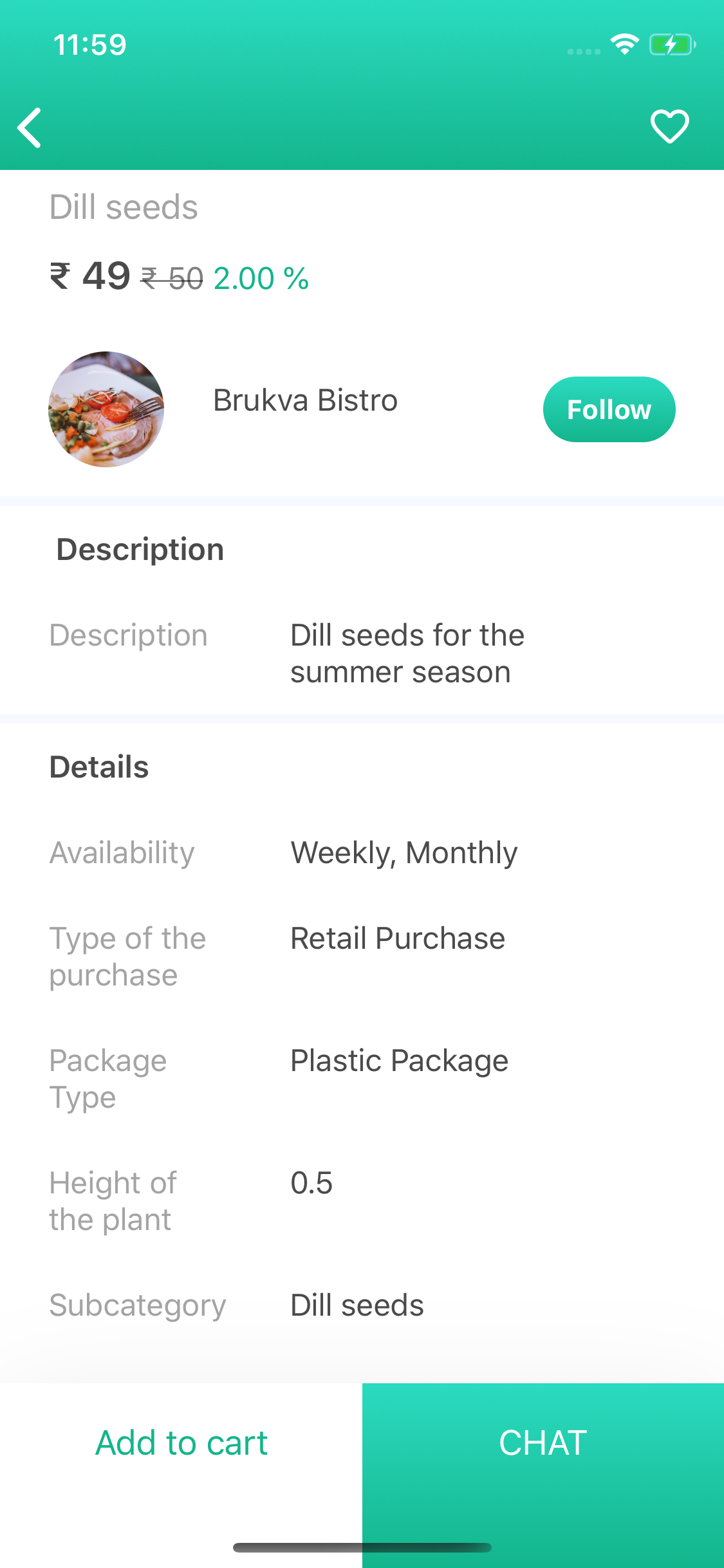
Demand side account: Common Consumers
We define common consumers as those who purchase food or any other products from the farmers based on their personal interest and needs. They do not have any future food processes in their mind except for consuming the products. They most likely would buy something for their family’s dinner or friends coming over.
Fresh Products, Quality and affordable price could be most common priority for the common consumers.
Top 3 features needed for this segment:
- Ability to discover right providers (farmers or retailers) with machine recommended or filters like price, nearby, reviews, etc
- Able to chat with them to clarify any things
- Quickly able to order their purchases
Demand side account: Business Buyer (wholesale / retail)
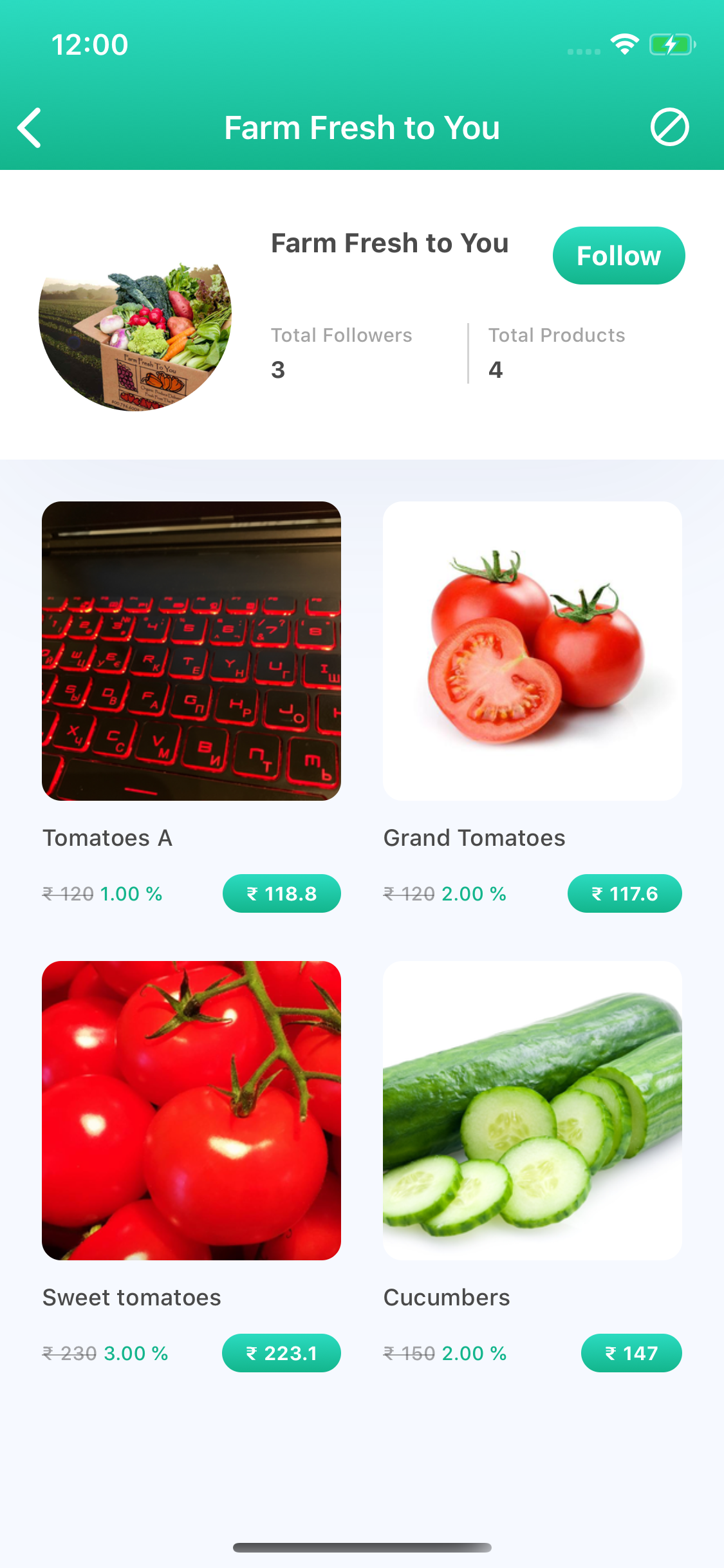
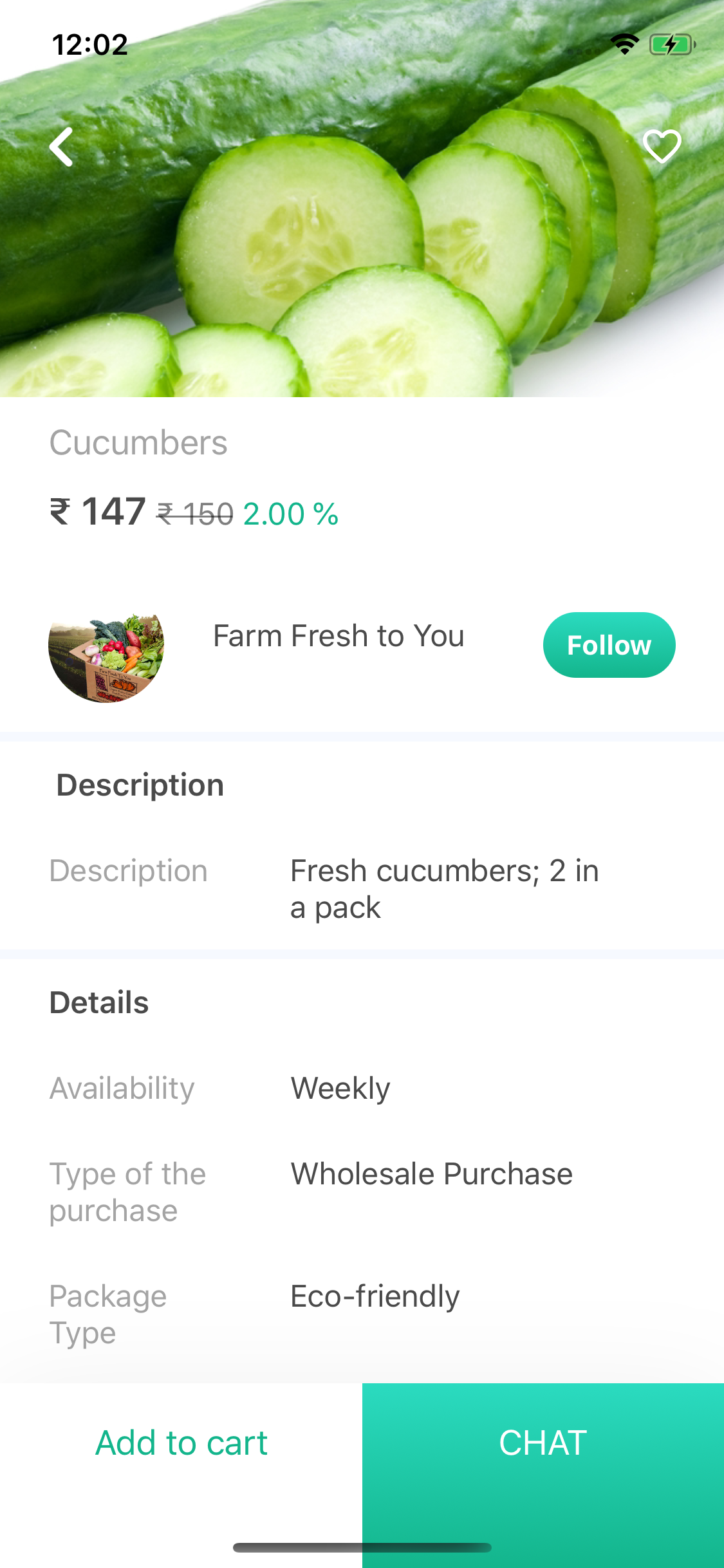
We define buyers as those who purchase the food for the future resale to make their own profit. They would usually require wholesale purchases not necessarily in the eco friendly packages. They would try to find a lower price among all of the available ones.
Therefore, when working with the buyer, it is important to make sure that the farmer could supply them when needed most likely with the wholesale purchase. They would probably ask not for the high quality package but fresh and simultaneously cheaper products.
Top 3 features needed for this segment:
- Ability to get tax,invoices , etc for proper accounting
- Able to cancel, make changes in the order based on business needs
- Able to buy combination of things with functionality like product variance or product set.
Demand side account: Restaurants
(buffet, bistro, casual dining, fine dining, fast food, fast casual)
We define restaurants as those who prepare and serve food and drinks to their customers. They prepare food from the products that they purchase on a daily basis to keep the food fresh and always accessible to cook specific dishes.
Therefore, when working with the restaurant, it is important to make sure that the restaurant is getting its products supplied on a daily basis or by request. They want to get those fruits and vegetables etc fresh with all the information available about the product.
Top 3 features needed for this segment:
- Procurement Feature and Analytics (coming soon)
- Tax, Invoicing
- Able to filter suppliers with product attributes like vegan,organic, food certification , etc to make sure they get quality ingrediants for their customers
Demand side account: government agency
We define government agency as some sort of governmental representative who checks the market performance of a specific region and is ready to help when needed. Their purpose of using the platform is not to actually make a purchase but to check on everyone’s progress.
Therefore, when working with the government agency, it is important to make sure that the representative could follow those farmers and customers they want and need to. It would be better if they could save the ones they have an interest in so that it is easier to follow them or reach out in a case.
Top 3 features needed for this segment:
- Advanced Analytics
- Discovery of different stake holders account with filters and intelligence
- Custom features
By going digital, every stake holders has vast number of benefits. And partnerning with companies like Tradly will help to get to the market faster with matured product and future proof product.